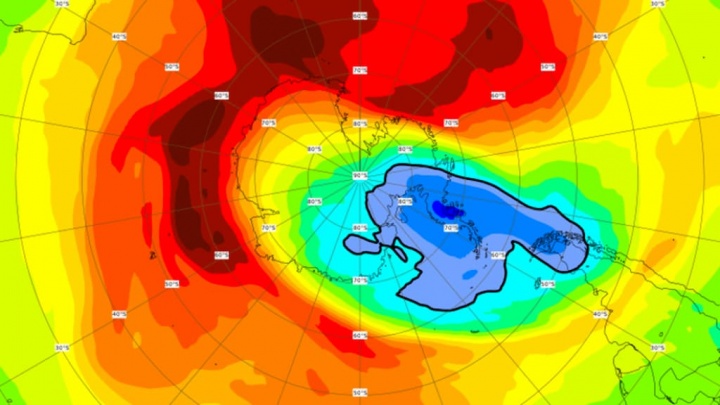We’ve been hearing about a hole in the ozone layer for many years now. There was news recently that the hole is shrinking, but the European Atmospheric Monitoring Service Copernicus has now provided new information.
In 2019, the ozone hole will be about 11 million square metres. Currently it will be on an area of 14 million square meters.
The ozone layer has grown dramatically in the past week
The ozone layer is a region belonging to the upper layers of the atmosphere, its height varies from 20 to 30 km. Ozone, an unstable gas, is concentrated in this region, and it is possible to find concentrations of about 10 ppm (parts per million).
This layer absorbs a significant portion of the ultraviolet rays that reach the Earth's atmosphere and are very harmful to all life. Its absence will lead to a significant increase in the number of skin cancers, among other adverse effects.
The size of the hole in the ozone layer in the Southern Hemisphere exceeded the size of Antarctica, a continent with an area of about 14 million square kilometers, announced today the European Copernicus Service, which monitors the atmosphere.
The ozone hole has grown exponentially in the past week and is now greater than 75% of the ozone hole this time of year since 1979
This year, the ozone hole has developed as expected at the start of the season. It looks very similar to previous years, which were not exceptional in September, but then it became one of the biggest years on our records at the end of the season.
According to scientists' estimates, this year the hole will develop in a different way than usual.
The vortex is quite stable and stratospheric temperatures are lower than last year. We are facing a very large and possibly deep ozone hole
Copernicus director, Vincent-Henri Buch
The monitoring system relies on computer modeling, combined with satellite imagery, similar to weather forecasts, to obtain a comprehensive three-dimensional picture of the ozone hole.
The hole in the ozone layer was discovered in 1985. In 1987 the Montreal Protocol was signed between 196 countries and the European Union. The goal was to gradually eliminate the production of about a hundred substances responsible for depleting the ozone layer.

“Coffee trailblazer. Social media ninja. Unapologetic web guru. Friendly music fan. Alcohol fanatic.”



